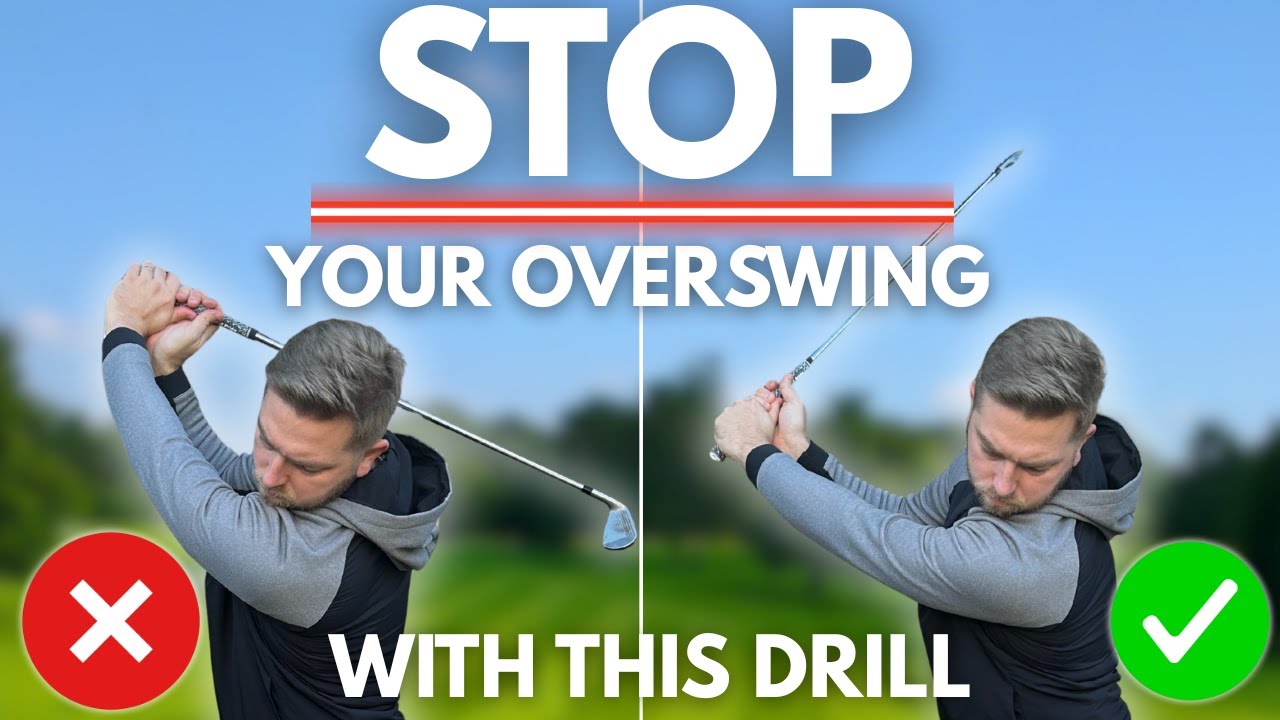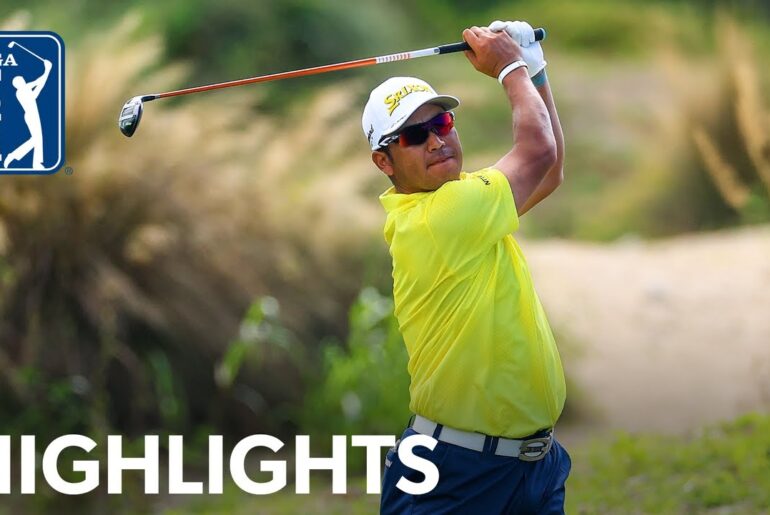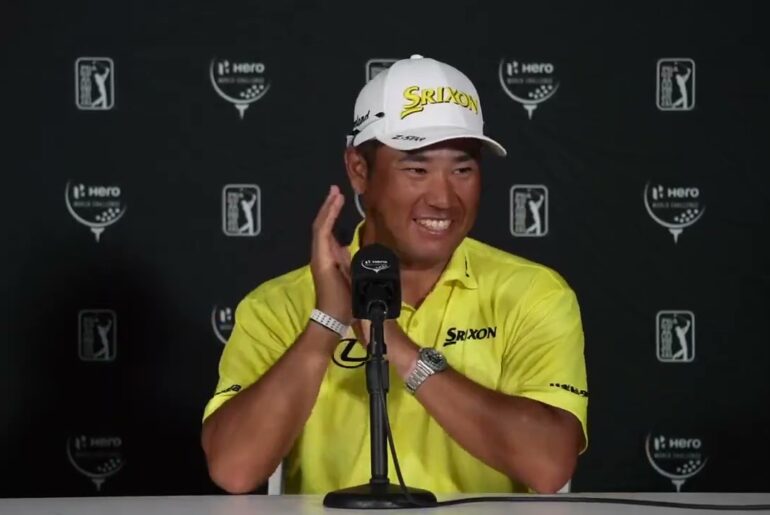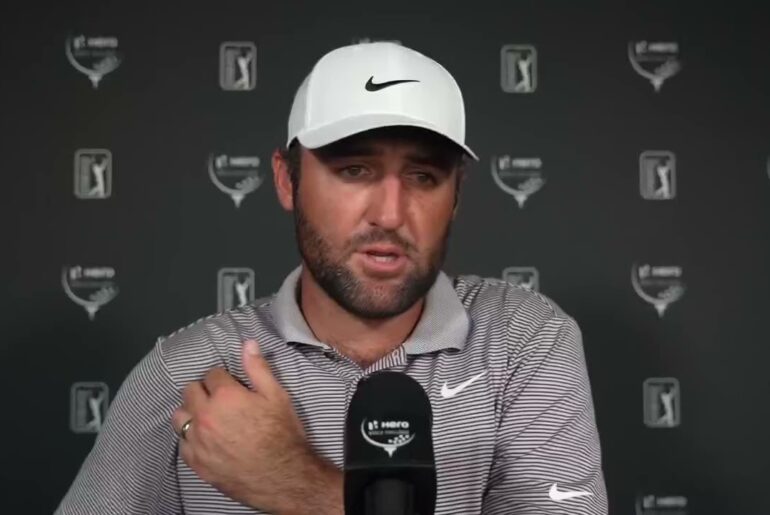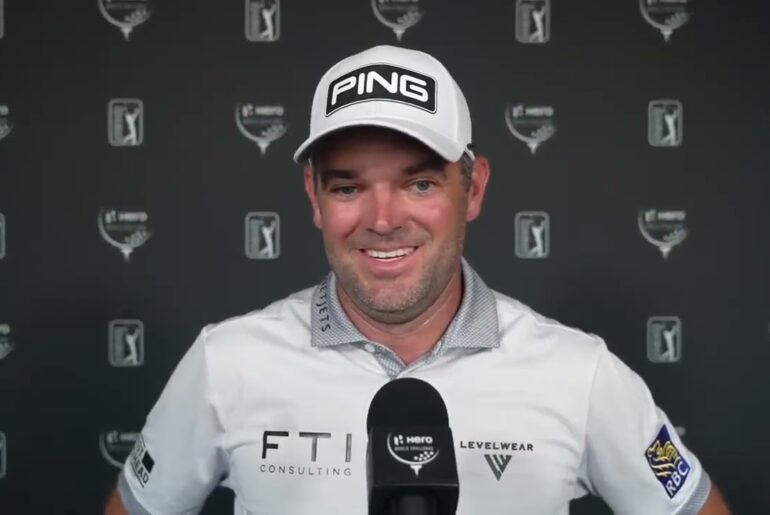Stop Overswinging in Golf | Wrist Hinge Drill for a Shorter, More Controlled Backswing
Do you struggle with overswinging your golf swing? Many golfers lose control because they over-hinge their wrists, which leads to a backswing that’s too long and inconsistent. In this video, I’ll show you a simple golf drill that will help you:
⛳ Stop overswinging and gain control
⛳ Learn the correct amount of wrist hinge in the golf swing
⛳ Shorten your backswing without losing power
⛳ Improve ball striking, accuracy, and consistency
This overswing drill works for golfers of all levels. By learning how to manage your wrist hinge correctly, you’ll develop a more compact, repeatable swing that holds up under pressure.
If you’ve been searching for:
• how to stop overswinging in golf
• golf swing wrist hinge drill
• shorter golf backswing tips
• improve consistency in golf swing
…this video is exactly what you need.
👉 Don’t forget to like, comment, and subscribe for more weekly golf tips and drills to improve your game. Hit the bell so you never miss a lesson!
– Follow me on the ‘Skillest App’ (App Store) for a FREE swing analysis and start improving your game.
– Become a FREE SUBSCRIBER to Jay Kelly #Golf
https://youtube.com/channel/UCEMJ-UXtEBJsG9UXoROUAuQ
– Titleist Staff Ambassador
https://www.titleist.co.uk/
– #Subscribe & #HitTheBell so you don’t miss out on any of my new videos!
——————————————————————————–
Instagram – https://www.instagram.com/jaykellygolfcoaching/
Web – https://www.jaykellygolfcoaching.co.uk/
———————————————————————————
Hi I’m Jay Kelly, welcome to my channel Jay Kelly Golf. This YouTube channel is designed to help you play better golf with easy to apply drills for your golf.
I mainly specialise in long game coaching. I look to provide you with some breakdowns and areas to search for in your game.
I understand not one drill will help the same issue so I look to dive deeper into what you can mechanically look for.
I want to help you play better golf so I will be providing topics on all areas of your game such as how to help fix your slice, fix your hook, hit the ball further and striking the golf ball better.
If you enjoy my channel, please make sure you hit subscribe and also hit the notification bell. This way you are always notified when I release new content.
Thanks for watching!
I am trying to fight it. I am trying actively to fight that. And I’m training my wrists to actually stay wider. [Music] Hi everyone and welcome back to my channel. In today’s video, I’m going to be discussing wrist hinge and how the overswing from the wrist can really be killing your game. If you are somebody that starts to move into the back swing and the wrist overhang letting go of the golf club, the golf club travels too far and we really struggle to make contact, then I have just the drill for you. So, let’s get into it. So, excessive wrist hinge can be a killer for many. And in this video, I’m going to go through quite a few of the reasons that it can harm your game and then give you a drill to do so. So, we’re actually going to start with timing. So, into the back swing, if I make a a really nice turn, but my wrist start to overhinge, the club travels too far, that is a long way to get the golf club back down to the ball. And if my timing is off for a day, that could be quite difficult to then apply the right forces. I would come down, I might release my wrist early, I might release them late, and then all of a sudden it makes contact quite unpredictable. The second reason, and probably the most common one I see, is when players move their wrist into more of an upward hinging position, or we could regard that as an overh. Nine times out of 10, the wrist will actually cup. Cuz what we know is when this wrist goes into a cupping state, it allows a larger range of motion for the wrist to hinge upward. Now, if I grip this club like this, and then I cut my wrist to get maximum hinge out of that, you can see I’ve opened the face. So, by the time I get to the top of my swing, my club face could be quite open. And then I’ve got to find a way to square that when I come back down into impact. And one of the most common ways to square that coming back down into impact is to actually start flicking the wrists at it. Because if I’ve got an open face like so, and I begin to cast, you can see how that face points somewhat straight now. Whereas, if I did a good job and I got some shaft lean and I shifted, that would be a really open face and not appropriate to hit the ball the furthest and the straightest. So, that would be another reason why that would cause that. And the third reason to why it can be a bit of a pain as well is as I start to overhinge my wrist, not only do I let go of the golf club, this angle between my forearm and shaft is quite sharp. And as I come down, that angle can remain sharp. And a couple of things can happen from here. I can either continue moving the club forward, but then the descent into the ground is going to be too steep, leading onto some really steep shots, poor contact, face issues, or as I start to work down, I might then try to release the club in an effort to find some space. I then might hang back in an effort to try and find the bottom of the arc. So, all of a sudden, we can really start to cause some ground connection issues as well, where I’m going to hit the ground before the ball, and then I’m moving away from the target. Whereas in an ideal scenario, what we’d really want to see is into the down swing, we’re starting to shift forward and drive the club more forward. But again, probably not appropriate if I’ve got excessive lag, excessive hinge in there. It’s going to be very difficult to unload that golf club. So, I might have to do things in an effort to try and unload it. So, the drill I’m going to show you is with a small resistance band. And I’ve just made a loop in the resistance band and tied a knot. And I’m going to pop that over my forearm. And I’m going to place it just below the elbow. So on the forearm, just below the elbow. And then I’m going to wrap it around my forearm and then grab it. So if I just pull that from the forearm up to the hands. If I do it like this, you can see that I’ve created some tension. So if I hinge my wrist backwards, I’ve created some amount of tension. So that if I was going to push my wrist away from me, one, I can feel it and the band is actually stretching. So, I have to work quite hard to do that. Now, some of you are thinking, well, isn’t that counterproductive? Because I want to keep the club nice and wide in this angle here. I want this 90° angle here. I don’t want it to hinge. So, why would I set that like that? Well, often the brain can work in the opposite. And if we just let it happen, we’re not necessarily training anything. So, using resistance band, I’m going to use resistance to actually train my wrist to not hinge as much. I’m almost pushing it in the other direction so that when I take this golf club here and I swing to the top, I’m not letting the band pull me back like this. I am trying to fight it. I am trying actively to fight that. And I’m training my wrists to actually stay wider. I’m physically pulling that band. I can feel that I’m staying wider into the takeaway, wider into the midsection, and then effectively wider when I get to the top. Now, if I can keep this width to the top in transition, I don’t mind letting it go a little bit and doing that. But if I overhinge it, I’ll just give those angles away again. So, actually reducing it, we would call this an underload pattern. If I was actually underloading this and just going back like that, then in the down swing, by all means, I could maybe create a little bit more angle. And I would start off just hitting some small shots, putting my weight a little bit forward, stretching out that band to about halfway, and then just chipping one forward. And I bet when you do this for the first time, when you video yourself back, you’ll probably realize that was not far off a full swing. I’ve done that a few times, it normally makes me laugh when I look back at it. So again, from here, if I just reset that, pull my hand back, connect the band so there’s some tension so that when I do this, I can feel it tugging. And then from here into the back swing trying to weight forward trying to maintain that tension as I turn and then drive forward from there. And you may well have seen this type of pattern in there. So let’s see if I can hit one more and we try again. So in this next one, let’s see if we can see any of that change of direction this way. So going wide to narrow rather than lots of hinging and throwing it away again. So let’s see if I can do that here. Controlling the rad. It feels really short as well, may I add. So, really shorten the arms. The body feels like it’s doing a lot, but quite short in the arms. So, weight forward, rolling the radius. That one felt really good there. Really good. So, I’m hoping that drill made sense into how you can potentially shorten the wrist angles and hopefully control them a little better to give you a little bit more consistency and be able to drive them more forward in the down swing rather than giving them all away again. So, if you like the video, please give it the thumbs up. And if you could subscribe to my channel, it would really mean a lot to me.

